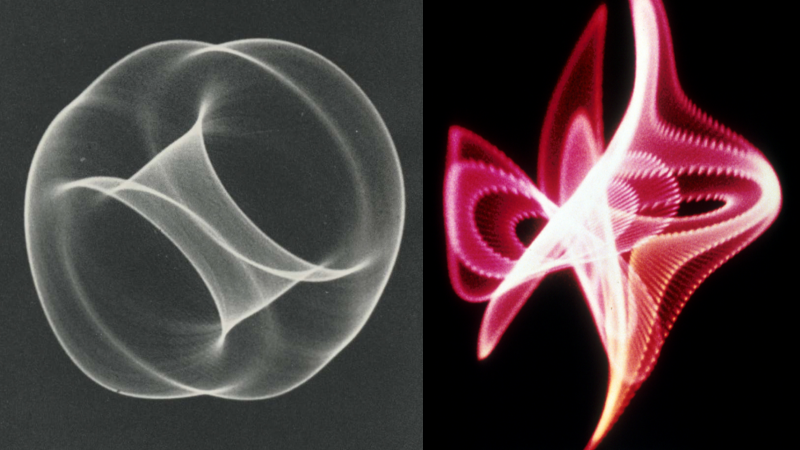Early Computer Art from the 1950s and 1960s

Modern day computer artist, [Amy Goodchild] surveys a history of Early Computer Art from the 1950s and 1960s. With so much attention presently focused on AI-generated artwork, we should remember that computers have been used to created art for many decades.
Our story begins in 1950 when Ben Laposky started using long exposure photography of cathode ray oscilloscopes to record moving signals generated by electronic circuits. In 1953, Gordon Pask developed the electromechanical MusiColor system. MusiColor empowered musicians to control visual elements including lights, patterns, and motorized color wheels using sound from their instruments. The musicians could interact with the system in real-time, audio-visual jam sessions.
In the early 1960s, BEFLIX (derived form Bell Flix) was developed by Ken Knowlton at Bell Labs as a programming language for generating video animations. The Graphic 1 computer featuring a light pen input device was also developed at Bell Labs. Around the same timeframe, IBM introduced novel visualization technology in the IBM 2250 graphics display for its System/360 computer. The 1967 IBM promotional film Frontiers in Computer Graphics demonstrates the capabilities of the system.
From the humble beginnings of computer art, lines between science, engineering, and art continued to blur as program code, algorithms, and engineered systems established their place in the art world. Explorations of generative computer art in areas such as randomness, chaos, electromechanics, psychology, human vision, cellular automata, and robotics expressed in various creative manifestations such as print, music, video, photography, typography, dance, mobiles, and sculpture.
In 1965, computer-generated art was featured in a gallery show for the first time. Despite skepticism, interest in the medium increased and spread around the world. In 1968, the Cybernetic Serendipity exhibition at the London Institute of Contemporary Arts inspired tens of thousands of visitors before continuing on a tour to the United States and leading to the formation of the British Computer Arts Society “to promote the understanding of the role of digital and electronic media in the arts.”
Enjoy some modern technology art from [Amy] in our coverage of her interactive When in Dome installation and her tutorial on creating beautiful glowables using Fadecandy and LEDs.
Post a Comment